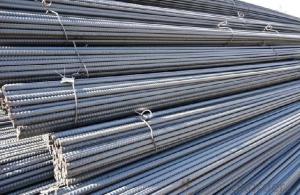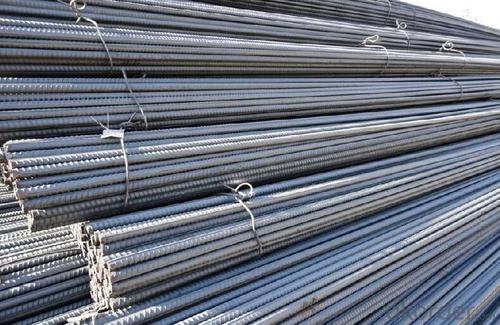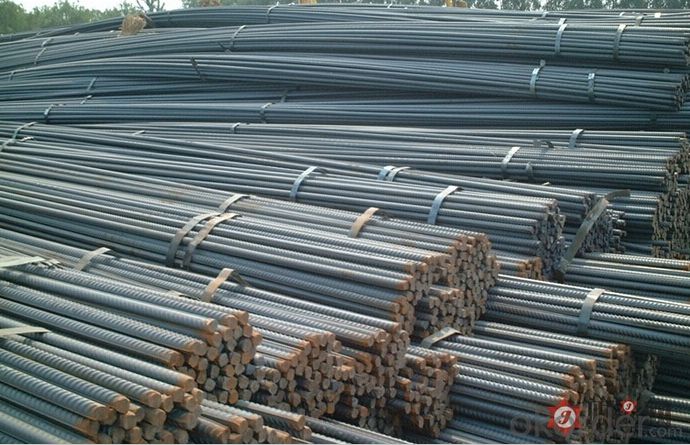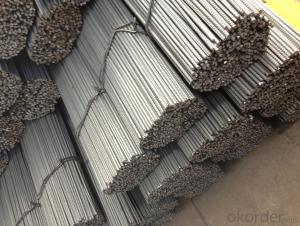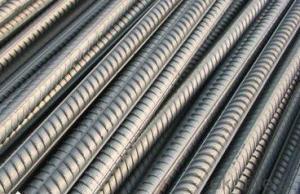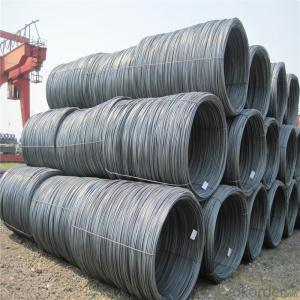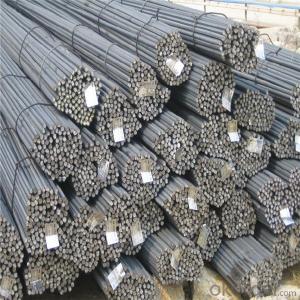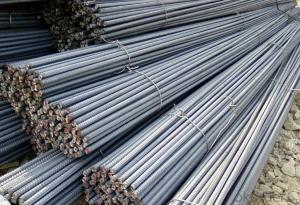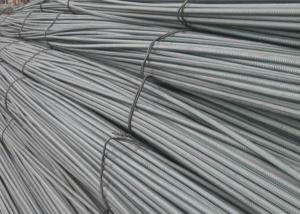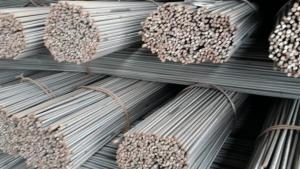BS4449 UK Standard Steel Rebar from China
- Loading Port:
- Tianjin
- Payment Terms:
- TT OR LC
- Min Order Qty:
- 100 m.t.
- Supply Capability:
- 10000 m.t./month
OKorder Service Pledge
Quality Product, Order Online Tracking, Timely Delivery
OKorder Financial Service
Credit Rating, Credit Services, Credit Purchasing
You Might Also Like
Specification
Standard:
AISI,JIS,GB,BS,DIN,API,EN,ASTM
Technique:
Hot Rolled,Cold Rolled,Cold Drawn,ERW,Forged,Saw,Extruded,EFW,Spring
Shape:
U Channel,Square,C Channel,Hexagonal,Round,Rectangular,Oval,LTZ
Surface Treatment:
Galvanized,Coated,Copper Coated,Color Coated,Oiled,Dry,Chromed Passivation,Polished,Bright,Black,PVDF Coated
Steel Grade:
Q195,Q215,Q235,Q215B,Q235B,RHB335,HRB400,200 Series,300 Series,400 Series,600 Series,SS400-SS490,10#,20#,A53(A,B)
Certification:
ISO,SGS,BV,IBR,RoHS,CE,API,BSI,UL
Thickness:
8-32mm
Width:
8-32mm
Length:
12mtr
Net Weight:
10
BS4449 UK Standard Steel Rebar from China
Details of the BS4449 UK Standard Steel Rebar from China
| Standard & Grade: | GB1499-98 : HRB335,HRB400,HRB500 |
| BS4449-1997 : GR460,GR500 | |
| CAN/CSA-G30.18-M92 : 400W | |
| ASTM A615 : Gr.40, Gr.60 | |
| Diameter: | 6mm;8mm;10mm;12mm;14mm;16mm;18mm;20mm;22mm;25mm;28mm;30mm;32mm;35mm;40mm |
| Length: | 6m,9m,12m |
| Packing: | Bundle packing |
| Origin: | China |
| Application: | Construction,Road,Machinery processing,Welding fields. |
| Delivery time: | 10-25 days |
| Shipment: | By bulk vessel or Container |
| Documents: | Mill Test Certificate,Commercial Invoice,Packing List,Certificate of Origin |
Company Introduction of the BS4449 UK Standard Steel Rebar from China
CNBM International Corporation is the most import and export platform of CNBM group(China National Building Material Group Corporation) ,which is a state-owned enterprise, ranked in 270th of Fortune Global 500 in 2015.
With its advantages, CNBM International are mainly concentrate on Cement, Glass, Iron and Steel, Ceramics industries and devotes herself for supplying high quality series of refractories as well as technical consultancies and logistics solution.
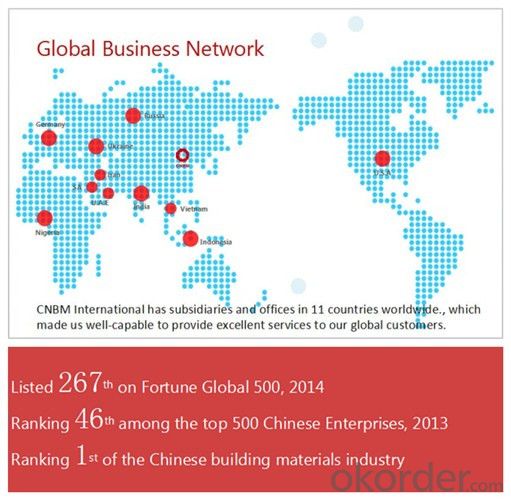
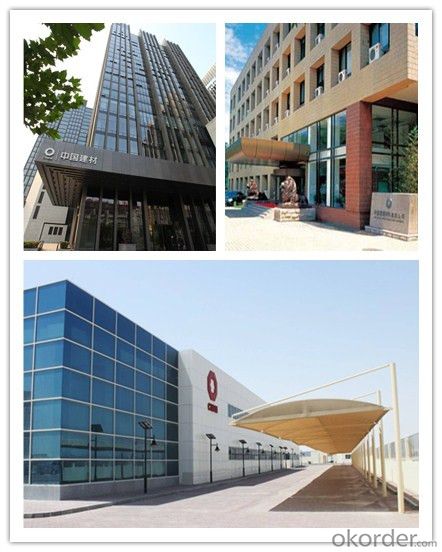
Packaging & Delivery of the BS4449 UK Standard Steel Rebar from China
| Packaging Detail | Sea worthy packing /as per customer's packing instruction |
| Delivery Detail | 15 ~ 40 days after receiving the deposit |
FAQ
| Are you a trading company or manufacturer? | Manufacturer |
| What’s the MOQ? | 1000m2 |
| What’s your delivery time? | 15-20 days after downpayment received |
| Do you Accept OEM service? | Yes |
| what’s your delivery terms? | FOB/CFR/CIF |
| What's the Payment Terms? | 30% as deposit,70% before shipment by T/T |
| Western Union acceptable for small amount. | |
| L/C acceptable for large amount. | |
| Scrow ,Paybal,Alipay are also ok | |
| Why choose us? | Chose happens because of quality, then price, We can give you both. Additionally, we can also offer professional products inquiry, products knowledge train (for agents), smooth goods delivery, excellent customer solution proposals. |
| What's your available port of Shipment? | Main Port, China |
| What’s your featured services? | Our service formula: good quality+ good price+ good service=customer's trust |
| Where are your Market? | Covering more than 160 countries in the world |
- Q: How is steel rebar manufactured?
- The process of making steel rebar, also known as reinforcing bar, involves a series of steps to ensure its high quality and durability. To begin with, raw materials such as iron ore, coal, and limestone are carefully chosen and prepared. Iron ore is extracted from mines and processed to eliminate impurities. Coal is used as a fuel to heat the iron ore, while limestone acts as a flux to remove impurities during the heating process. Once the raw materials are ready, they are combined in a blast furnace. This furnace, a large cylindrical structure, subjects the iron ore, coal, and limestone to extreme temperatures. The intense heat triggers a chemical reaction that separates the iron from impurities, resulting in molten iron. The molten iron is then transferred to either a basic oxygen furnace (BOF) or an electric arc furnace (EAF). In the BOF process, the molten iron is mixed with scrap steel and other alloys to achieve the desired steel composition. Oxygen is blown into the furnace, removing impurities and adjusting the carbon content. In the EAF process, electricity is used to melt the scrap steel and other alloys, leading to chemical reactions that modify the composition and eliminate impurities. Once the steel is produced, it is poured into continuous casting machines, which shape it into long, rectangular strands called billets. These billets go through a series of rolling mills, gradually reducing their size and shaping them into the desired cross-sectional profile. The rolling process also enhances the strength and durability of the steel. After the rolling process, the rebar undergoes quenching and tempering. This involves rapidly cooling the rebar in water to increase its hardness, followed by reheating it to a specific temperature and then slowly cooling it. This process improves the rebar's strength and ductility, making it suitable for reinforcing concrete structures. Finally, the rebar is cut into the desired lengths and often undergoes surface treatment, such as galvanization or epoxy coating, to enhance its resistance to corrosion. It is then bundled and shipped to construction sites, where it is used to reinforce concrete structures like buildings, bridges, and roads. To summarize, the production of steel rebar involves the selection and preparation of raw materials, the melting and refining of iron in a blast furnace or electric arc furnace, the shaping of the steel into billets through continuous casting and rolling, the quenching and tempering process to improve its strength and ductility, and the final cutting and surface treatment before it is ready for use in construction projects.
- Q: How are steel rebars protected during transportation and storage?
- Steel rebars are protected during transportation and storage through various measures such as stacking them on pallets or racks to prevent contact with the ground, using protective coverings or tarps to shield them from moisture and environmental elements, and securing them with straps or bands to prevent shifting or damage.
- Q: Can steel rebars be used in structures with high radiation shielding requirements?
- Yes, steel rebars can be used in structures with high radiation shielding requirements. Steel has good radiation shielding properties and is commonly used in such structures to provide protection against radiation.
- Q: Can steel rebars be used in structures with high chloride ion concentration?
- In structures with a high concentration of chloride ions, the use of steel rebars is generally not recommended. This is because chloride ions can cause corrosion of the steel, which can weaken the structure over time and potentially lead to structural failure, compromising safety and integrity. To minimize the risk of corrosion in environments with high chloride ion levels, alternative materials such as stainless steel rebars or fiber-reinforced polymers (FRP) can be utilized. Stainless steel rebars have a higher chromium content, which makes them more resistant to corrosion compared to regular steel rebars. On the other hand, FRP rebars are non-metallic and do not corrode, making them a suitable choice for structures exposed to high chloride ion concentrations. When selecting the appropriate reinforcement material for structures, it is crucial to consider the specific environment and exposure conditions. Seeking advice from a structural engineer and adhering to relevant building codes and standards can ensure the use of appropriate materials and prevent potential corrosion problems in high chloride ion environments.
- Q: Are there any alternatives to steel rebars for reinforcement?
- Yes, there are several alternatives to steel rebars for reinforcement. Some common alternatives include fiber-reinforced polymer (FRP) rebars, basalt rebars, and carbon fiber reinforced polymer (CFRP) rebars. These alternatives offer advantages such as corrosion resistance, high tensile strength, and lightweight properties. They are often used in applications where steel rebars may not be feasible or suitable, such as in marine environments or structures requiring reduced weight.
- Q: Can steel rebars be used in the construction of religious buildings?
- Yes, steel rebars can be used in the construction of religious buildings. In fact, steel rebars are commonly used in various types of construction projects, including religious buildings, due to their strength, durability, and ability to reinforce concrete structures.
- Q: Can steel rebars be used in renovation or retrofitting projects?
- Absolutely, renovation or retrofitting projects can indeed make use of steel rebars. In construction, steel rebars are frequently employed to fortify concrete structures and they can also be utilized in renovation endeavors to bolster pre-existing structures. When refurbishing or retrofitting a building, it often becomes imperative to reinforce the current structure in order to comply with modern building codes or support additional burdens. Strengthening walls, columns, beams, or slabs can be achieved by incorporating supplementary reinforcement into the concrete, thanks to the utilization of steel rebars. By integrating steel rebars into a renovation project, the building's structural soundness can be enhanced, thereby ensuring its safety and durability.
- Q: Can steel rebars be used in marine construction?
- Yes, steel rebars can be used in marine construction. However, it is important to use corrosion-resistant rebars, such as epoxy-coated or stainless steel rebars, to prevent corrosion from saltwater exposure.
- Q: Can steel rebars be used in bridges?
- Yes, steel rebars can be used in bridges. They are commonly used as reinforcement in concrete structures, including bridge construction, to enhance the strength and durability of the bridge.
- Q: How long do steel rebars last in structures?
- Steel rebars can last for several decades, typically around 50 to 100 years, when used in structures. However, their lifespan can be affected by various factors such as the quality of the rebar, environmental conditions, maintenance practices, and exposure to corrosive agents. Regular inspections and proper maintenance can significantly extend the lifespan of steel rebars in structures.
Send your message to us
BS4449 UK Standard Steel Rebar from China
- Loading Port:
- Tianjin
- Payment Terms:
- TT OR LC
- Min Order Qty:
- 100 m.t.
- Supply Capability:
- 10000 m.t./month
OKorder Service Pledge
Quality Product, Order Online Tracking, Timely Delivery
OKorder Financial Service
Credit Rating, Credit Services, Credit Purchasing
Similar products
Hot products
Hot Searches
Related keywords
